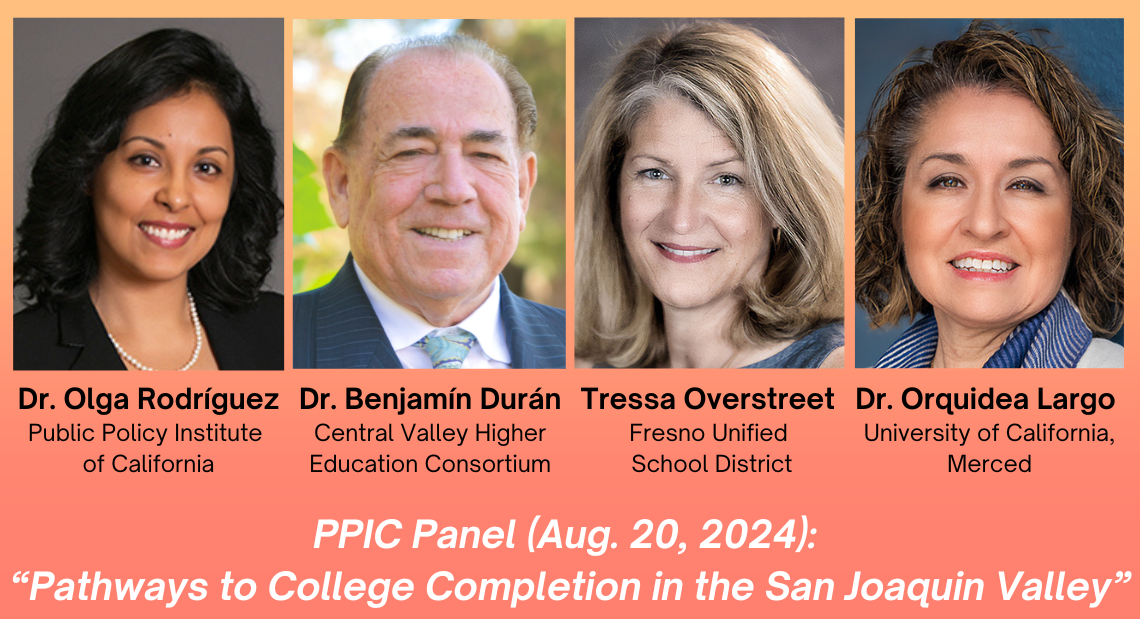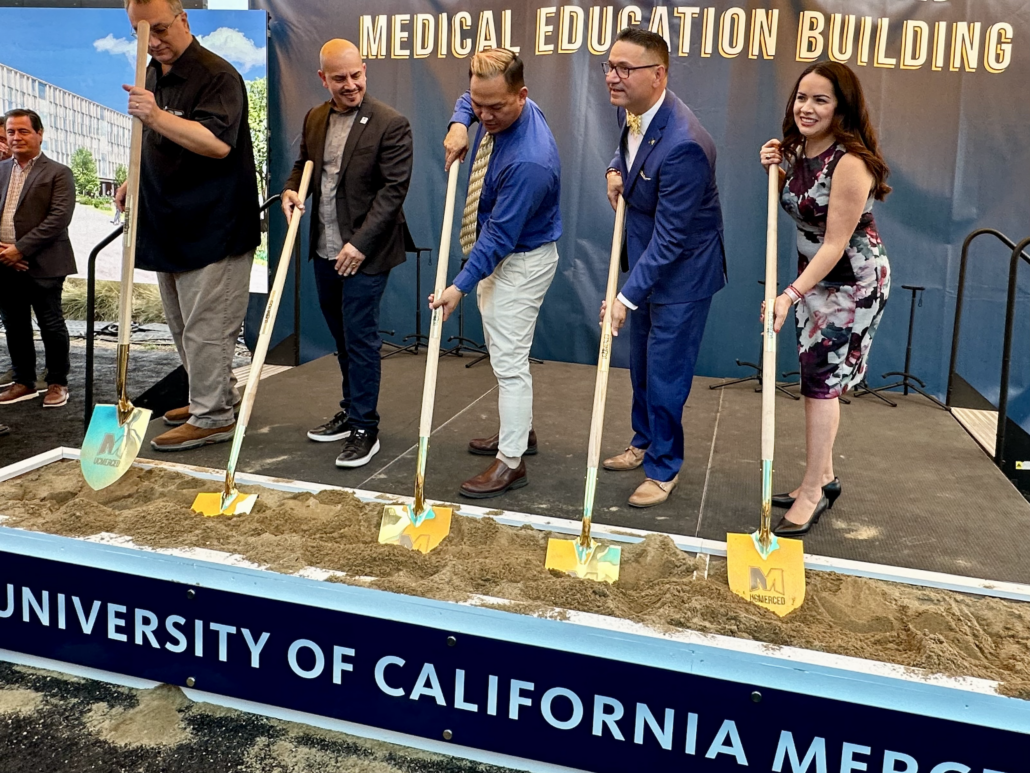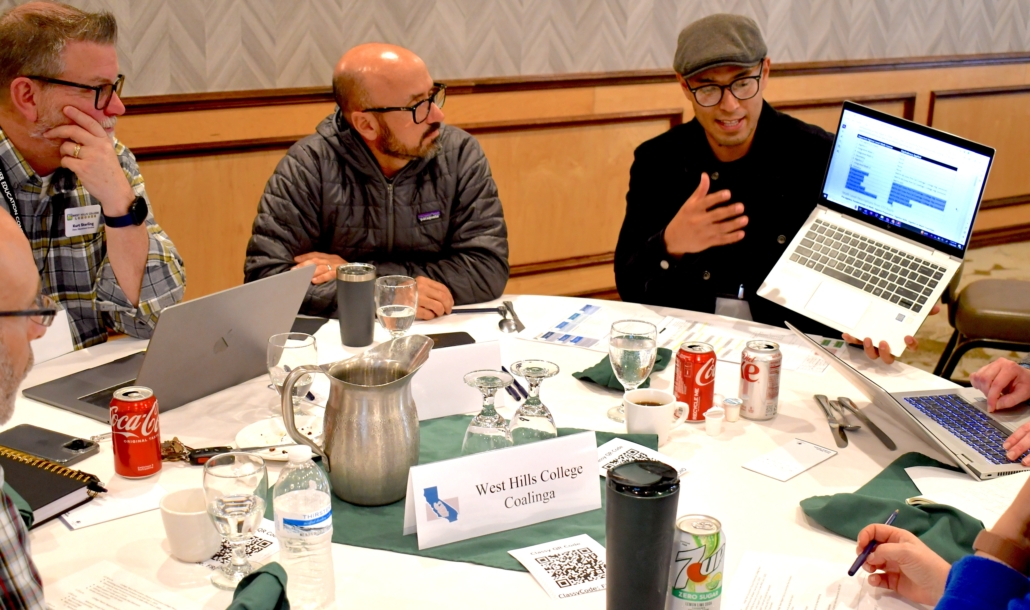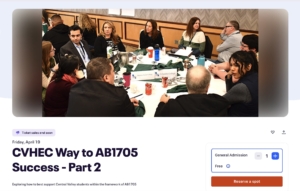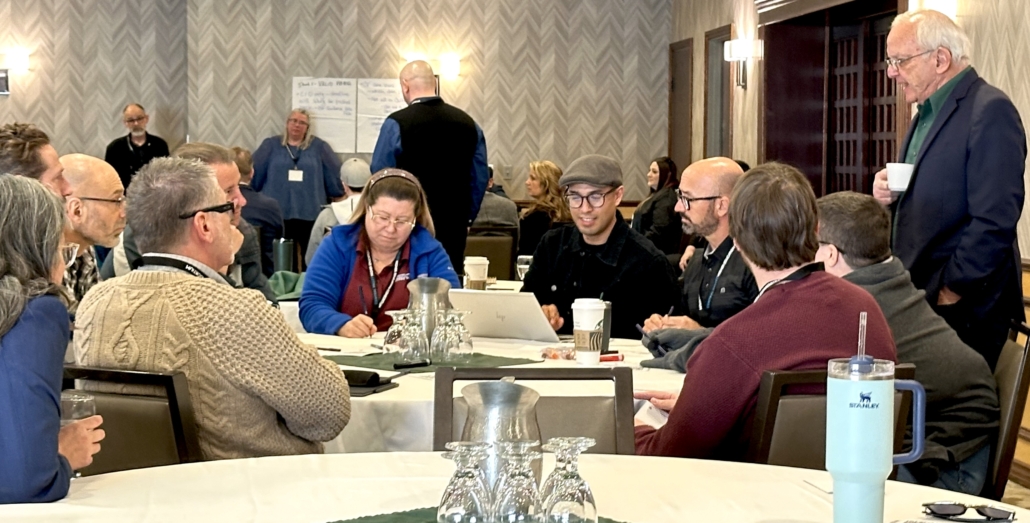 Dr. John Spevak (at right), vice president-emeritus of Merced College and currently a regional coordinator for CVHEC, was an English teacher early in his career and now coordinates the English and Math Task Forces for the consortium working directly with community college teachers in the valley’s nine-county region. Here he facilitates the Math Task Force convening in Fresno January 26. For Teacher Appreciation Week, CVHEC reposts this column Dr. Spevak wrote for the Westside Express recently. This occasion is a special time to honor the men and women who lend their passion and skills to educating our children. It’s a chance for parents, caregivers, and community members to celebrate the hard work and dedication of teachers and school staff throughout the year.
Dr. John Spevak (at right), vice president-emeritus of Merced College and currently a regional coordinator for CVHEC, was an English teacher early in his career and now coordinates the English and Math Task Forces for the consortium working directly with community college teachers in the valley’s nine-county region. Here he facilitates the Math Task Force convening in Fresno January 26. For Teacher Appreciation Week, CVHEC reposts this column Dr. Spevak wrote for the Westside Express recently. This occasion is a special time to honor the men and women who lend their passion and skills to educating our children. It’s a chance for parents, caregivers, and community members to celebrate the hard work and dedication of teachers and school staff throughout the year.
Teaching English In A Community College:
Today Versus Yesterday
BY DR. JOHN SPEVAK
CVHEC Regional Coordinator
Vice President-Emeritus – Merced College
The other day I had a conversation with college professors who teach English to community college students (as I taught English at the Los Baños college campus many years ago).
I came away from that conversation thanking my lucky stars I taught in the 1970s and 80s — and not today.
When I taught my first English class at the Los Baños Campus of Merced College in 1971, life was good, and so was teaching. I enjoyed sharing my love of reading and writing with the students gathered in my classroom.
I appreciated the many times when the students, young and old, expressed their increased enjoyment of reading and writing as a result of being in my class. There were many lively, interpersonal interactions.
When I gave writing assignments, I knew my students were responding with their own thoughts and ideas, which often were the result of questions they asked in class. I appreciated the growth I saw as students became more proficient writers, as well as more thoughtful readers.
And I enjoyed it when students came into my office and engaged in thoughtful conversations, with questions that enabled them to explore ideas in more depth.
Today, however, for all professors in community colleges but especially those who teach English, teaching has become much harder and less interpersonal.
Today’s community college English professors have to navigate and endure six challenges I never had to face: “bot students,” having to teach online, the lingering consequences of COVID, two new state regulations and (most recently) artificial intelligence.
I don’t know how they do it. But listening to them, I realize they persist while keeping their love for English and their passion for helping students succeed.
“Bot students” was a term that was new to me. My colleagues explained these are fraudulent or fake students, names and student ID numbers of nonexistent people that show up on class lists. Bot students are the work of sophisticated cyber-scammers trying to illegally collect financial aid.
One English professor told me he noticed 30 names on his first class roll sheet, only to find that just five of them were real.
College technology administrators are doing everything they can to distinguish real students from bot or fake students, but scammers keep finding new ways for bot students to appear on class roles, especially for online classes.
This brings up another current challenge for community college professors—teaching online. Currently about 50 percent of community college students prefer taking courses online instead of in person. For a professor to keep her or his job, this almost always results in being required to teach one or more classes online.
Teaching online, something I never had to do as an English instructor, is much different from teaching in person, especially after two years of COVID, during which the only classes were online.
Good online teachers really have to work to get interactions between themselves and their students. And they have to make sure the students’ work is truly their own.
COVID also created another challenge. During the pandemic, most high schools were reluctant to give Fs to students because many students had insurmountable challenges to online access. In many cases students passed courses just by virtually showing up.
After COVID, a lingering challenge for community college professors is the “COVID” approach many students have about passing the course. They ask their professors, “You mean I have to do the work?”
For California community college English teachers there is still another challenge. A few years ago, the state legislature passed regulations which essentially eliminated remedial English classes. Overall, it was a good idea, because too many students gave up when they had to keep taking remedial courses.
This created a new challenge for English professors. How do they help students who have had limited success in writing become proficient writers in one semester? Good college English teachers have found ways, but it requires much more time and energy than I spent teaching to make this happen.
Meanwhile, recent state legislation also makes it easier for community colleges to offer college classes to high school students on their high school campuses. This was another good idea, enabling more and more students to get a head start on college.
At schools where there are few if any high school teachers with master’s degrees in English, many community college English professors needed to travel to the high schools to teach those college courses.
Finally, here comes artificial intelligence (AI), which makes it much easier for real community college students to cheat by submitting essays generated by a computer and not by their own minds.
Today’s professors, especially in English courses, have to find ways to determine whether a student’s writing is truly his or her own. This is especially challenging when teaching online courses.
Whew, I’m exhausted just listing the challenges today’s community college English professors face that I didn’t 40 years ago.
All of this makes me appreciative and proud of my current English teaching colleagues. The community college English professors I know are determined to meet all these challenges even though it takes much more time and effort to teach English today than “in my day.”
I salute my current English colleagues who continue to do such an important job, making college students better readers and writers and giving them greater opportunities to succeed in college, in careers and in life.
See the original Westside Express version (March 29, 2024 )
CVHEC blogs by Dr. John Spevak :
WHAT THE CV-HEC IS HAPPENING BLOG (September 2023): Teachers
WHAT THE CV-HEC IS HAPPENING BLOG (December 2023): The gift of math

